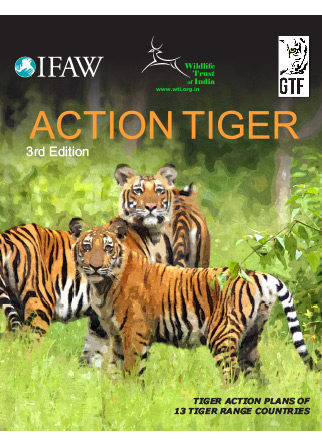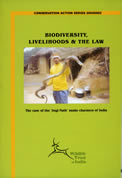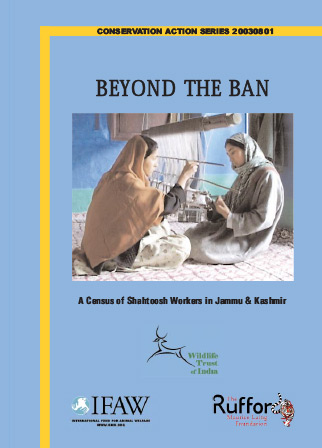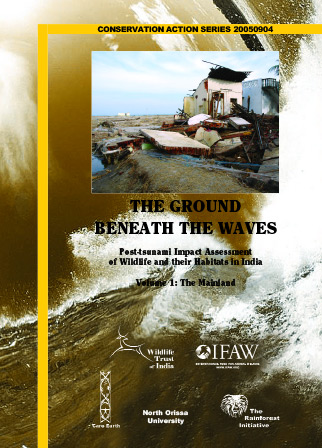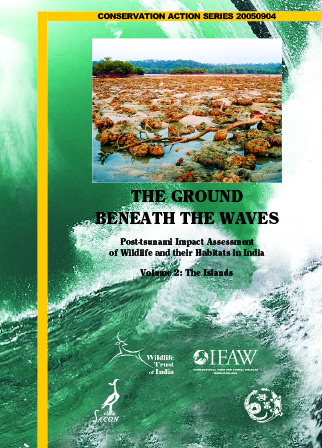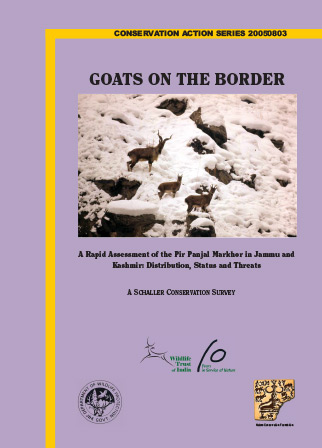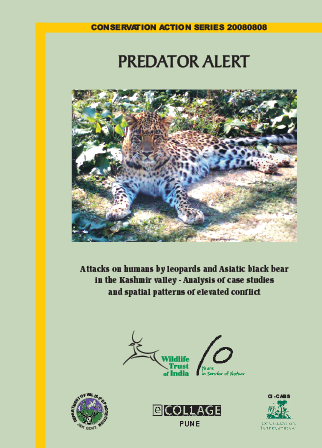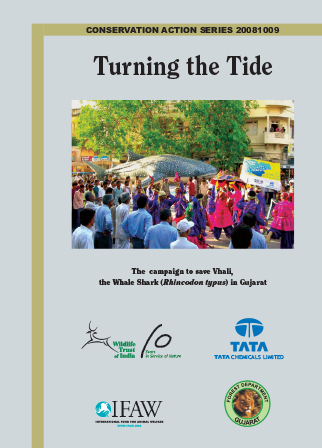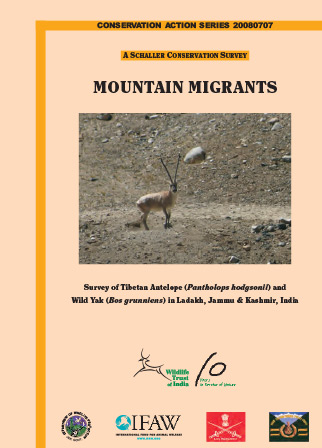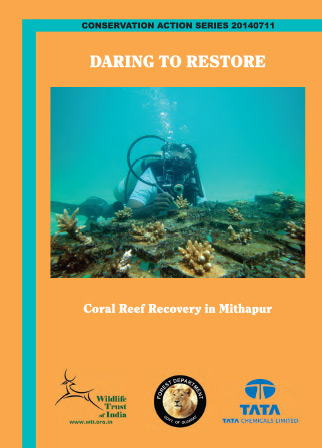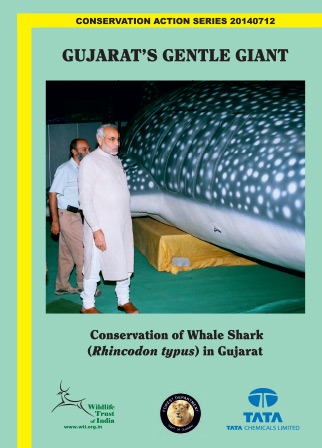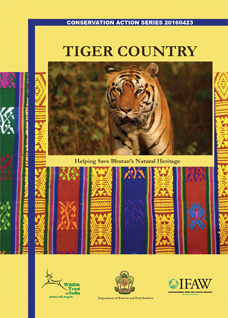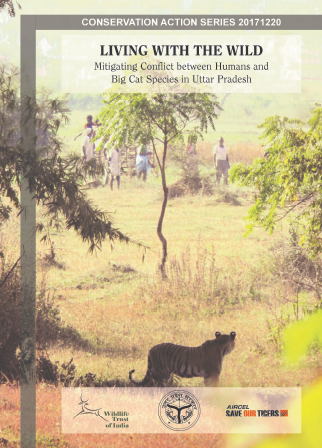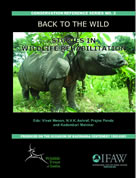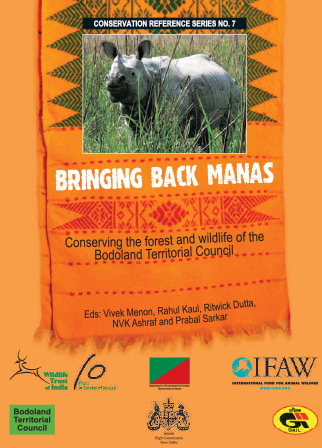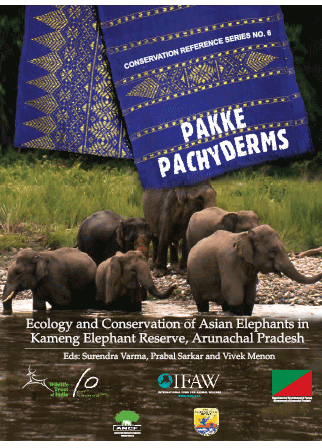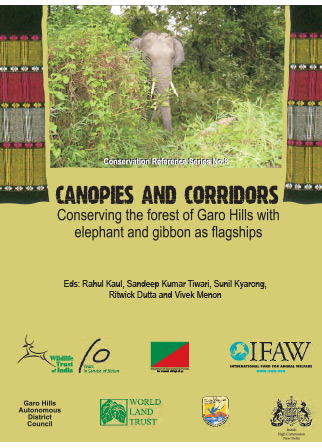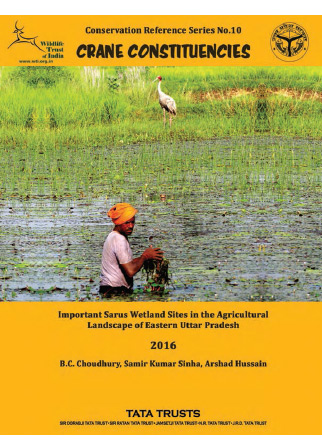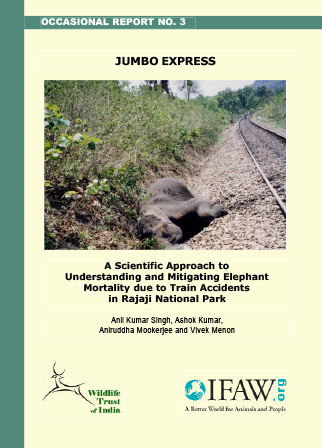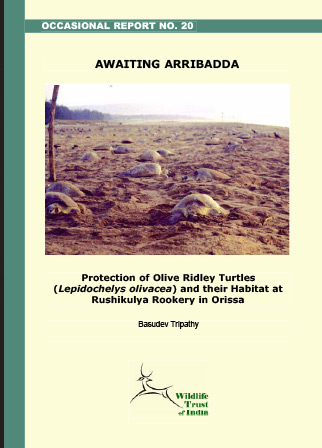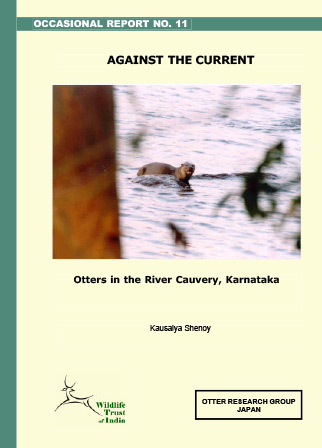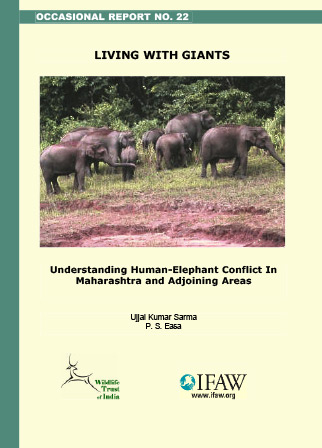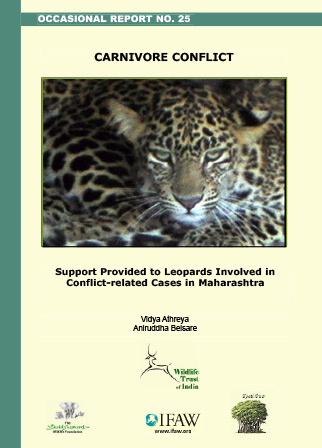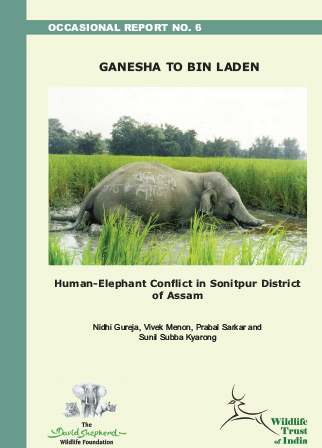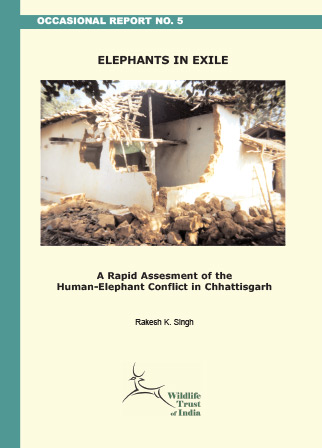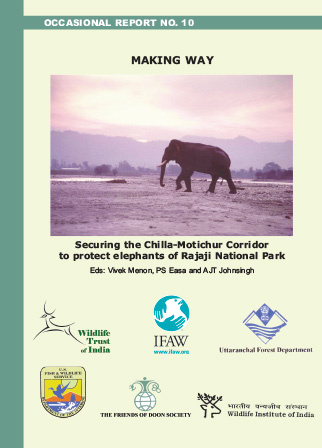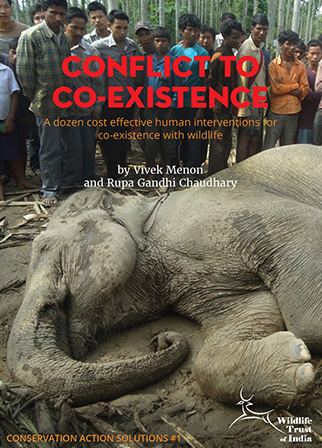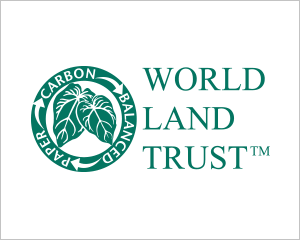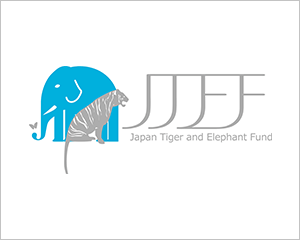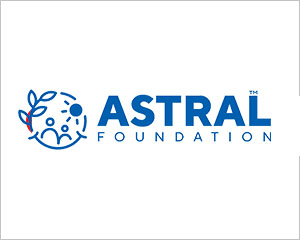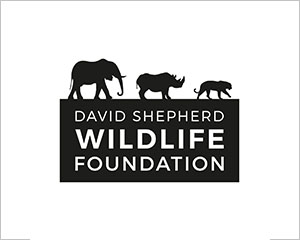PUBLICATIONS
Search for a specific publication, or a subject such as ‘conflict mitigation’ or ‘whale sharks’
ACTION PLAN
India, the country supposedly in possession of more than 50% of the world’s wild tiger population is currently facing what may be termed as the “Third Tiger Crisis” having been triggered off by the Sariska Tiger Reserve fiasco, which lost all its tigers to poaching. With the tiger facing a serious challenge in its entire distribution range, the Global Tiger Forum has compiled the Tiger Action Plans of 12 range states in this volume, giving scientists and conservationists an insight into the strategies adopted by governments to deal with the problem.
With the tiger facing a serious challenge in its entire distribution range, the Global Tiger Forum has compiled the latest Tiger Action Plans of 13 tiger range states into this third edition of the Action Tiger, giving scientists and conservationists an insight into the strategies adopted by governments to deal with the problem.
National Bear Conservation and Welfare Action Plan 2012
Four of the eight species of bears range in India. This National Conservation and Welfare Action Plan for bears in India follows the IUCN (2008) guidelines that involve participatory processes to ensure conservation successes. This publication was released by the Ministry of Environment and Forests during the 21st International Conference on Bear Research and Management in New Delhi and marks a singular change in the way India has looked at its bears.
CONSERVATION ACTION REPORTS
Back from the Brink – Recovering the wild buffalo (Bubalus arnee) Population in Central India
For over 15 years, WTI has worked with the Chhattisgarh Forest Department to save its state animal – the wild buffalo (Babalus arnee) in Central India. The publication, which is the first-ever comprehensive report on the species, spells out the key results of collaboration in domains ranging from conservation research to conservation action, involving grassroots initiatives to international advocacy.
Biodiversity, Livelihoods & The Law: The case of the ‘Jogi-Nath’ snake charmers of India
Conservation Action Series 20040602
A Study report is a result of research on how conservation laws were affecting the livelihoods of the ‘Jogi-Nath’ snake charmer community spread across five states in north India. This multidisciplinary research included the socio-economic status of the community, the herpetology and the welfare conditions of the captive snakes kept by the community. This study also details the oral ethnobotanical pharmacopoeia of the community. Recommended reading for both sociologists and conservationists alike for the nuanced approach taken by the research team. The study was supported by WTI and the Rufford Maurice Laing Foundation.
Beyond the Ban: A Census of Shahtoosh Workers in Jammu & Kashmir
Several thousand workers in Jammu & Kashmir made a living off shahtoosh, the wool derived from killing the endangered Tibetan antelope (Pantholops hodgsonii). IFAW and WTI initiated a survey to assess the actual and potential economic impact of the ban on shahtoosh on these workers and provide suggestions their rehabilitation.
The Ground Beneath the Waves – Vol 1 (Mainland)
WTI and IFAW, along with their collaborators, conducted rapid assessment surveys in the coastal areas of Andhra Pradesh, Tamil Nadu, Kerala and the Andaman and Nicobar Islands to review the ground situation in the tsunami hit areas. Each volume of this Conservation Action Report documents several useful recommendations for ecological restoration and re-construction activities on the mainland and the islands, respectively.
The Ground Beneath the Waves – Vol 2 (Islands)
WTI and IFAW, along with their collaborators, conducted rapid assessment surveys in the coastal areas of Andhra Pradesh, Tamil Nadu, Kerala and the Andaman and Nicobar Islands to review the ground situation in the tsunami hit areas. Each volume of this Conservation Action Report documents several useful recommendations for ecological restoration and re-construction activities on the mainland and the islands, respectively.
Goats on the Border: A Rapid Assessment of the Pir Panjal Markhor in Jammu & Kashmir
This Conservation Action Series report documents the first ever survey of the endangered and elusive Pir Panjal markhor, conducted in collaboration with the J&K Wildlife Department and the Nature Conservation Foundation with support from the Environment and Ecology Cell of the Indian Army. It also marks the launch of the Schaller Conservation Surveys by the Wildlife Trust of India.
Predator Alert: Attacks on humans by leopards and Asiatic black bears in the Kashmir valley
The purpose of this Conservation Action Series report is to suggest measures which could be employed to reduce this conflict. The report presents the findings of a comprehensive survey and suggests both short term and long term measures to improve the situation vis-à-vis human-wildlife conflict.
Walking the Bears: Rehabilitation of Asiatic Black Bears in Arunachal
This Conservation Action Report documents the Asiatic Black bear Rehabilitation Project initiated jointly by the Wildlife Trust of India and the Department of Environment and Forests, Arunachal Pradesh, in partnership with the International Fund for Animal Welfare in 2003. This was the first instance of bear rehabilitation being taken up in India.
Turning the Tide: The Campaign to save the whale shark in Gujarat
At the turn of the century, the world’s largest fish, the whale shark, was being slaughtered commercially in large numbers along the coast of Gujarat. The Whale Shark Conservation Project by WTI, Tata Chemicals Limited and the Gujarat Forest Department has turned Gujarat’s whale shark hunters into its protectors. This Conservation Action Series report documents the early years of the project.
Mountain Migrants: A Survey of the Tibetan Antelope and Wild Yak in Ladakh
This Conservation Action Series report documents a joint survey undertaken primarily by the Department of Wildlife Protection, Jammu and Kashmir and the Wildlife Trust of India, of the Tibetan antelope (Pantholops hodgsonii) and wild yak (Bos grunniens) in Ladakh, Jammu & Kashmir, India.
Daring to Restore: Coral Reef Recovery in Mithapur
This Conservation Action Series report documents the Mithapur Coral Reef Recovery Project, launched in 2008 by WTI, Tata Chemicals Ltd and the Gujarat Forest Department. The project includes a first-of-its-kind transplantation of coral species (Acropora humilis) from Lakshwadeep to Mithapur, where they were locally extinct.
Gujarat’s Gentle Giant: Conservation of Whale Shark (Rhincodon Typus)
This Conservation Action Series report documents the Whale Shark Conservation Project by WTI, Tata Chemicals Limited and the Gujarat Forest Department, which turned Gujarat’s whale shark hunters into its protectors. The species’ ecological requirements, scientific studies undertaken as part of the project, the pioneering self documentation scheme for whale shark rescues and community campaigns are all covered here.
Tiger Country: Helping Save Bhutan’s Natural Heritage
A Conservation Action Series report on four years of work by IFAW-WTI in partnership with the Government of Bhutan, training forest guards, customs and enforcement personnel, and assisting the Bhutanese forest department in taking action to save local wildlife in distress.
A Dance to Forget: The Story of the Eradication of Sloth Bear Dancing from India
A comprehensive Conservation Action Series report on the 2005 project by WTI and the World Society for Protection of Animals, UK to eradicate the medieval practice of bear dancing from India, by rehabilitating and providing alternative livelihoods to the Kalandar community.
Living with the Wild: Mitigating Conflict between Humans and Big Cat Species in Uttar Pradesh
This Conservation Action Series report outlines a holistic model of conflict mitigation that evolved under Wildlife Trust of India’s Uttar Pradesh Big Cat Conflict Mitigation Project (now the Terai Tiger Project), run in partnership with the state forest department. The field tested approach thus developed involves a sustained process of engagement with local communities, mated with technical expertise and effective on-ground enforcement.
This report is the result of WTI’s long term commitment to the Right of Passage for these majestic animals from land acquisition and voluntary relocation to the rehabilitation of families living in the Thirunelli-Kudrakote elephant corridor, a project initiated with the Kerala Government in 2005 with the support of Elephant Family, World Land Trust and IUCN Netherlands.
CONSERVATION REFERENCE SERIES
Call of the Divine Duck – Conservation Strategy and Action Plan for the White Winged Duck in Assam
This strategy document is designed to serve as a guide for decision-making authorities, conservationists, academic researchers and regional stakeholders for formulating and implementing effective action and measures for conservation of the species and its habitat in the north-eastern region of India. We hope the document will help in building a coordinated initiative towards the common goal of conserving this enigmatic forest duck of northeast India.
This book is in response to a need felt by field-level forest and enforcement officers, lawyers, NGOs, activists and civil society in dealing with legal issues related to forests and wildlife. It is a well-known fact that effective prosecution of offenders is greatly hampered due to the lack of access to laws, and specifically, case laws, on forest and wildlife issues. This book is a compilation of some of the most significant orders of the Supreme Court and the High Courts on the Wildlife (Protection) Act, 1972, and the Forest (Conservation) Act 1980 in a single volume for ready reference.
Hasthisiksha Elephant Training Manual
Elephants have been in captivity in India for close to 3000 years. First as war machines, then as lumber operators and now as occasional charioteers of divinity and the tourist, elephants have served Indians like no other wild animal. This work of reference by Andrew McLean is a practical manual for mahouts to change the age old methods of training elephants to one of positive reinforcement.
Wildlife Law: A Ready Reckoner
Conservation Reference Series No. 1
This ready reckoner has proven to be a handy legal tool for forest department staff who are the first responders to wildlife crime. This ready reckoner incorporates the procedures relating to arrest, search, collection and recording of evidence along with guidelines on the rights of the arrested or detained perpetrator. This reckoner includes provisions of the Criminal Procedure Code (CrPC) and the Indian Evidence Act to aid the field enforcement official in dealing with a wildlife offence and building up a case.
Back to the Wild: Studies in Wildlife Rehabilitation
Conservation Reference Series No. 2
A compendium of resources on wildlife rescue and rehabilitation, this is a compilation of rehabilitation experiences from across the world. The various chapters, principles, guidelines, standards and the case studies detailed in this report are a distillate of the experiences of wildlife veterinarians, biologists and hands-on animal rehabilitators. Recommended reading and suggested reference material for every wildlife rescue and rehabilitation worker.
The first edition of Right of Passage released in 2005 is a significant contribution to elephant conservation in India. The publication is an outcome of concerted efforts by Wildlife Trust of India, a number of acknowledged elephant experts, officials and NGO’s who identified 88 elephant corridors across India, detailing them in a Conservation Reference Series report.
Poisons and the Pachyderm: Responding to Poisoning in Asian Elephants
Veterinarians, para-vets, wildlife managers and conservationists across India are facing situations where they need to react rapidly to cases of elephant poisoning. This Conservation Reference Series volume, which lists out every known poison affecting Asian elephants, its symptoms, effects and antidotes, will prove handy to all those dealing with poisoned elephants.
Bringing Back Manas: Conserving the Forest and Wildlife of the Bodoland Territorial Council
This Conservation Reference Series report catalogues over five years of effort by the Wildlife Trust of India in partnership with the Bodoland Territorial Council, the Assam Forest Department, the International Fund for Animal Welfare and the British High Commission to Bring Back Manas, working to restore the protected area to its former glory.
Pakke Pachyderms: Ecology and conservation of Asian Elephants in Kameng Elephant Reserve
This Conservation Reference Series report is the first detailed account of the distribution, threats and conservation status of the Asian elephant in the Kameng Elephant Reserve, Arunachal Pradesh. This project has over seven years analysed the extent of man-animal conflict in the area and implemented mitigating measures.
Canopies and Corridors: Conserving the Forests of the Garo Hills
The Balpakram and Nokrek Protected Areas are the two ecological crown jewels of the Garo Hills. The two are connected tenuously by forested lands along the spine of the Garo Hills much of which is akhin owned, private community forests and jhummed land. This Conservation Reference Series report documents the declaration of two village reserves – the Selbelgre Village Reserve Forest to protect gibbons and the Siju-Aretika Village Reserve Forest and Rewak Kosigre Village Reserve to secure a critical elephant corridor.
Crane Constituencies: Important Sarus Wetland Sites in Eastern Uttar Pradesh
This Conservation Reference Series report documents important wetland sites in the agriculture dominated landscape of Eastern Uttar Pradesh wherein the sarus crane, India’s only resident breeding crane, has been found.
Right of Passage: Elephant Corridors of India [2nd Edition]
This Conservation Reference Series publication brings together, in its second edition, a comprehensive listing of India’s 101 elephant corridors as listed and mapped by elephant experts in consultation with all state forest departments that are part of the elephant range in the country. Securing these corridors so that elephants and other species can locally migrate between habitats is crucial to their survival.
OCCASIONAL REPORTS
Today habitat loss and fragmentation are huge threats to our wildlife. It is therefore imperative to link our Protected Areas to allow species movement between important habitats to maintain genetic diversity in wildlife populations. Without this, local extinctions can occur. The Kanha-Achanakmar tiger corridor is one such crucial linkage connecting Kanha Tiger Reserve, Madhya Pradesh, with Achanakmar Tiger Reserve, Chhattisgarh. This Occasional Report highlights the challenges and importance of this corridor as an important area for tigers and prey species.
The National Chambal Sanctuary (NCS) is India’s only tri-state riverine Sanctuary and is the breeding ground of endangered Indian Skimmers (Rynchops albicollis). Past scientific projects reported that low water flow conditions in the river made way for predators like dogs and jackals resulting in egg/chick predation, as well as unintentional trampling by cattle and human movement. Recognizing that effective protection of nests and chicks required constant monitoring, a WTI Rapid Action Project was implemented to pilot a nesting-island protection programme involving members of the local community, State Forest Department and conservationists. This Occasional Report covers the project activities which resulted in two Indian Skimmer nesting sites being protected, where 42 nests were active with 54 Indian Skimmer fledglings.
The National Chambal Sanctuary (NCS) is India’s only tri-state riverine Sanctuary and is the breeding ground of endangered Indian Skimmers (Rynchops albicollis). Past scientific projects reported that low water flow conditions in the river made way for predators like dogs and jackals resulting in egg/chick predation, as well as unintentional trampling by cattle and human movement. Recognizing that effective protection of nests and chicks required constant monitoring, a WTI Rapid Action Project was implemented to pilot a nesting-island protection programme involving members of the local community, State Forest Department and conservationists. This Occasional Report covers the project activities which resulted in two Indian Skimmer nesting sites being protected, where 42 nests were active with 54 Indian Skimmer fledglings.
‘Bear Necessities’ discusses the need for a scientific approach to understand the human-bear conflict that is on the upswing since the past few years. This report documents areas of varying intensities of conflict between humans and sloth bears in the central Indian State of Madhya Pradesh and recommends some short and long-term measures to mitigate this conflict.
Believed to be confined to the Brahmaputra valley of Assam, the sighting of 25 endangered Greater Adjutant Storks in the floodplains of the Ganga and Kosi rivers paved the way for a Rapid Action Project on studying the status and distribution of this endangered bird in Bihar. This report documents the sightings of the GAS in Bihar and recommends measures to conserve the species.
‘No Mast Kalandar’ recounts the need for and steps taken to create a life time care facility for sloth bears rescued from their captive ‘dancing profession’ with Kalandars, a nomadic community that has traditionally trained bears to perform for entertainment. The project to rehabilitate these freed ‘dancing’ sloth bears was conceived and implemented as a ‘wild within walls’ facility in Bannerghatta Biological Park, Karnataka
The endangered Ladakh Urial has to compete with livestock for pasture resources in the Leh district of Ladakh Trans-Himalaya. A rapid survey estimated their numbers at being between 700 and 800 animals that faced threats, such as habitat loss and degradation in addition to resource competition.
INDIA AT THE INTERNATIONAL WHALING COMMISSION
India has been a member of the International Whaling Commission since 1981 and has maintained a consistent stand on whale conservation. This report documents India’s contribution to the IWC compiled from verbatim records and documents submitted by India’s Commissioners between 1981 and 2003.
While hangul conservation has traditionally centreed around Dachigam National Park, historically there have been significant populations outside the park. The hangul population, meanwhile, has been dwindling in Dachigam. It was, therefore, imperative to identify remnant satellite populations of the species for conservation. The survey found that five sites around Dachigam indeed have some hangul. Other areas too present possibilities. Three probable habitats have now been identified for surveys in winter.
Wildlife Trust of India (WTI) has been conducting special health camps for captive elephants since 2001. Captive Elephant Care, which is part of the Captive Wildlife Welfare division, is one of the first welfare projects of WTI’s Wild Rescue programme. This report brings to light the health status of captive elephants that attended the three health camps organised between 2003 to 2005 during the annual elephant festival in Kaziranga.
Elephants remain a special attraction at Asia’s largest cattle fair that happens at Sonpur in the Eastern Indian state of Bihar each year during November and December. A health camp for captive elephants was organised by the Wildlife Trust of India and the International Fund of Animal Welfare each year since 2001, where elephants are examined and treated and their owners are educated and made aware about the welfare of their animals. This publication reports on the four health camps for captive elephants held at Sonpur from the years 2001 to 2004.
The Sarus is one of India’s most charismatic yet threatened birds. This WTI report chronicles the fight through litigation to save the largest breeding grounds of the species in the world and advocates a community – state participatory model to save the Etawah and Mainpuri wetlands of Uttar Pradesh.
Considered among the rarest of Indian mammals, the mysterious Malabar civet (Viverra civettina) has proven a challenging subject to conservationists attempting to study its status and distribution in the Western Ghats. This report is an outcome of a two-year long conservation survey – funded by the Ministry of Environment and Forests, Government of India and implemented by the Wildlife Trust of India (WTI) – conducted to establish the presence of this elusive viverrid in lowland Western Ghats in the south Indian states of Kerala and Karnataka.
Jumbo Express: Mitigating Elephant Mortality Due to Train Accidents in Rajaji National Park
This Occasional Report documents the scientific studies and recommendations behind one of WTI’s most successful rapid action projects when a series of short-term pro-active reforms were undertaken in collaboration with Northern Railways to prevent elephant deaths due to collisions with trains in Rajaji National Park.
An occasional report of a training camp on the health and management of captive elephants in Jaipur from 20th to 23rd of August 2001. Health of 98 captive elephants were examined in this camp. Read this report to know more about WTI’s early Wildlife Veterinary efforts, our learnings which we documented to improve our efforts in outreach and wildlife health care.
Awaiting Arribada: Protection of Olive Ridley Turtles and their Habitat at Rushikulya Rookery
The mass nesting of Olive Ridley turtles (Lepidochelys olivacea) along the coast of the eastern Indian state of Odisha is affected by anthropogenic pressures. The six-kilometer beach at Rushikulya is an important rookery that was the focus of this Rapid Action Project to protect the eggs, hatchlings and the habitat of the Olive Ridley turtles.
Against the Current: Otters in the River Cauvery, Karnataka
While the Oriental small-clawed otter inhabits the forested stretches of the River Cauvery in the upper reaches, the smooth-coated otter inhabits the lower tracts. Limiting human disturbances along these stretches and curbing the poaching of otters and illegal trade in pelts are vital for the conservation of otter populations.
Search for a Spectacle: Conservation Survey of the Phayre’s Leaf Monkey
An Occasional Report on a conservation survey of the Phayre’s leaf monkey (Trachypithecus phayrei) in Assam and Mizoram supported by National Geographic Society and Conservation International.
Silent Stranglers: Eradication of Mimosa in Kaziranga National Park
An Occassional Report on a Habitat Recovery project conducted by Wildlife Trust of India in partnership with International Fund for Animal Welfare and supported by Assam Forest Department.
Tribal Territories: Impact assessment of settlers on the Jarawa Tribal Reserve
When civilization extends its arm to isolated tribes, its impact is felt in the form of pressure and conflicts with poachers and new settlers, fishing, hunting and dwindling forest resources. This report is the outcome of a study on the impact of settlers on the Jarawa tribal reserve in the Andaman Islands.
Living with Giants: Understanding Human-Elephant Conflict In Maharashtra and Adjoining Areas
Over several decades, elephants have steadily moved out of their range states into non-elephant ranges in search of more conducive ecosystems. This leads them to direct conflict with humans who have never lived in the vicinity of elephants before. This Occasional Report throws light on the issue of human-elephant conflict in Maharashtra and Goa and provides recommendations to deal with the same.
Carnivore Conflict: Support Provided to Leopards Involved in Conflict-related Cases in Maharashtra
The most common reaction to human–leopard conflict is their trapping and translocation to nearby forests. This Occasional Report documents the technical and veterinary support provided to the Maharashtra Forest Department during the capture and translocation of leopards from conflict areas. It recommends science-based action keeping in mind the ecology of the species.
Ganesha to Bin Laden: Human-Elephant Conflict in the Sonitpur District of Assam
This Occasional Report documents an investigation that was carried out in the Sonitpur region of Assam, looking into reasons for the declining tolerance of the villagers towards elephants, and recommending immediate measures, as well as a long-term strategy to tackle the issues relating to Human-Elephant Conflict.
Elephants in Exile: A Rapid Assessment of Human-Elephant Conflict in Chhattisgarh
Large-scale open-cast mining is one of the prime reasons for the destruction of elephant habitat in Jharkhand. As a result, the elephants from such dispossessed habitats have managed to move into new territories in Chhattisgarh. This Occasional Report on a Rapid Survey conducted over two weeks throws light on this issue and suggests preliminary methods to manage elephants in Chhattisgarh.
Deadly Tracks: Understanding and Mitigating Elephant Mortality Due to Train-hits in Assam
Railways and highways are a source of wildlife mortality throughout the world. At least thirty-five elephants lost their life due to train hits in Assam between 1990 and May 2006. This Occasional Report throws light on the issue of elephant mortality due to train-hits in Assam and provides recommendations to deal with the same.
The Mithun (Bos gaurus frontalis), a semi-domestic bovid, is susceptible to predation causing economic loss to villagers in Arunachal Pradesh. The villagers retaliate by killing the predators ‘thought’ to be responsible. This Occasional Report attempts to identify the causes of conflict, incorporating socio-economic and livelihood strategies of local communities, status of mithun, predators (especially Dhole or Indian wild dogs) and wild prey.
Making Way: Securing the Chilla-Motichur Corridor to Protect Elephants of Rajaji National Park
The movement of elephants between the Chilla forest range of Rajaji National Park, on the east bank of the Ganga, and Motichur, on the west bank, came to a virtual halt because of several man-made obstacles. This Occasional Report looks at WTI’s initiative in securing the Chilla-Motichur Corridor as well as eliminating train-hit incidents.
Popularization of Alternatives to Dolphin Oil Among Fishermen for the Conservation of the Ganges River Dolphin (Platanista gangetica) in Bihar. Wildlife Trust of India, New Delhi.
A Report from the field in three wetlands namely Sarsai Nawar, Sauj and Gaad using questionnaire survey and verification of land survey records. This assessment was carried out post the Allahabad High Court order which put a stop to the implementation of Usar Sudhar Nigam, a government scheme which would have proven detrimental to Sarus Crane habitats in these wetlands by eventually draining them. The High Court Order was one of our early conservation successes. Read on to know what this early assessment recommended for the conservation of these wetlands.
CONSERVATION ACTION SOLUTION
Assessing the Potential for Reintroducing the Cheetah in India
Reintroductions of large carnivores have increasingly been recognised as a strategy to conserve threatened species and restore ecosystem functions. The cheetah is the only large carnivore that has been extirpated, mainly by overhunting in India in historical times. India now has the economic ability to consider restoring its lost natural heritage for ethical as well as ecological reasons. In this context, a consultative meeting of global experts was held at Gajner in September 2009. A consensus was reached at this meeting for conducting a detailed survey in selected sites to explore the potential of reintroducing the cheetah in India.
In conjunction with long-term measures it is essential that rapidly deployable and field-tested solutions to alleviate Human Wildlife Conflict be brought to the forefront. This inaugural volume of the Conservation Action Solutions series does just that, summarising ten successful conflict mitigation measures already employed by WTI, and two new ideas that are worth implementing as pilot projects.

Institutional Partner



